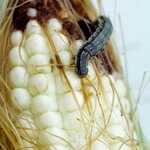Environment

Green roofs, well-established in Europe, are becoming a growing trend in North America.
Some benefits are tangible, like conserving energy and managing storm water runoff, while others are more speculative, such as improving air quality or having a positive psychological impact on communities. Green roofs are loosely defined as "landscapes over structure," and the methodology and vocabulary of green roofs are imported from Europe, especially from Germany, where green roofs have been required on most structures for over 20 years.
Most German words translate easily into English…

A dry spring has meant a rampant wildfire season already for Australia.
Hold those fires back? Arguably the largest volunteer fire department in the world. New South Wales uses volunteer fire services, even newly-elected Prime Minister Tony Abbott is a member.
"The tragedy is that many of them have lost their own homes while they've been out saving those of others," says Kingston University academic Dr. Neil Thomas, an expert in environmental hazards.
October 17th, 2013 was particularly bad. By 6:30 p.m. local time, 90 wildfires burned, 36 of them out of control and threatening…

There was once a perception that nature was somehow unspoiled and humans changed that. It was never really true, it was just an arbitrary naturalistic fallacy, but it caught on among environmentalists who began lobbying for a return to this historical ecosystem.
Actual conservation efforts have to be a little more practical - after all, if keeping things untouched is the goal, environmentalists would be voting for the Tea Party Republicans who kept the US government shut down. Since the president wouldn't let anyone into National Parks, the animals and plants were left alone.
On…

Since 1996, corn containing a gene that allows it to create a protein that is toxic to certain insects yet is safe for human consumption has been grown in the United States.
Most of this genetically modified "Bt corn" has been used for animal feed or processed into corn meal, starch, or other products. Varieties of sweet corn (corn on the cob) have existed since the late 1990s, though relatively few acres have been planted related to the impact of marketing campaigns against it by activist groups.
A new study doesn't rehash the well-documented safety issue and instead deals with the…
Industry has made efforts to reuse or to transport shale gas wastewater to deep injection wells, but wastewater is still discharged into the environment, after being treated, in some states.
In western Pennsylvania, water that comes from Marcellus shale is naturally high in salinity and radioactivity but a new Duke study examined the quality of shale gas wastewater resulting from hydraulic fracturing and found that the stream water above and below the Josephine Brine Treatment Facility disposal site that is derived from the Marcellus shale gas flowback water showed elevated levels of…

This paper reviews recent studies and particularly the effects of Climate Change in the North Tropical Atlantic by studying atmospheric conditions that prevailed in 2005 ; Coral Bleaching HotSpot and Hurricane Katrina.
In the aim to better understand and estimate the impact of the physical phenomenon, i.e. Thermal Oceanic HotSpot (TOHS), isotopic studies of δ18O and δ13C on marine animals from Guadeloupe (French Caribbean Island) were carried out.
Recorded measures show Sea Surface Temperature (SST) up to 35°C in August which is much higher than data recorded by NOAA satellites 32°C.
After…

Calcium helps strengthen bones in people but it is also a critical nutrient for healthy tree growth and new research shows that adding it to the soil helps reverse the decades-long decline of forests ailing from the effects of acid rain.
Acid rain forms when sulfur dioxide and nitrogen oxides – gases produced from the burning of fossil fuels – react with water molecules in the air. The mountainous regions in the Northeast have thin soils that are already acidic, so they have limited ability to withstand the assaults of nutrient-dissolving acid rain. Moreover, watersheds along the…
A $12 million program wants to revolutionize current farming methods by giving crops the ability to thrive without using costly, polluting artificial fertilizers.
Four teams are using synthetic biology to create new components for plants: a global search for a mysterious lost bacterium with significant unique functions; work to engineer beneficial relationships between plants and microbes; and an effort to mimic strategies employed by blue-green algae.
The U.S. National Science Foundation (NSF) and U.K.'s Biotechnology and Biological Sciences Research Council (BBSRC) made the awards following…

Satellite observations made from 1982 to 2010 found that warm, arid regions are getting greener.
Researchers have long argued that increasing atmospheric carbon dioxide will fertilize enhanced plant growth because carbon dioxide is a fuel source for plants' photosynthesis. In water-limited regions an increased atmospheric carbon dioxide concentration would allow plants to absorb the gas they need, while minimizing water loss.
However, attributing the observed greening to the carbon fertilization effect rather than changes in water or nutrient availability or other factors is difficult…

The Canadian boreal forest, stretching from the Yukon in the west to Newfoundland and Labrador in the east, remains one of the world's great natural treasures.
The ecologically diverse region contains the largest blocks of intact forest and wetlands left on Earth and scientists have found 1 billion to 3 billion nesting birds from 300 species there. Its abundant wildlife and freshwater have sustained Aboriginal communities for millennia.
But the Canadian boreal is also rich in natural resources that are prized by a number of extractive industries. Hydropower, forestry, mining…